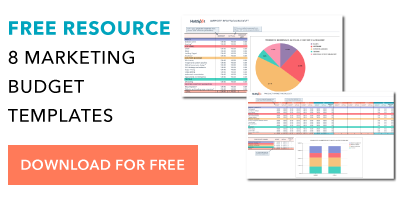When you first start a business, you're laser-focused on the quality of your product -- polish the idea, build it, rebuild it, test it, go to market.

Money doesn't matter much yet. You might have initial funding, but all of it goes to research and development.
But when that product begins to sell, and funding turns into revenue, you have more bookkeeping to do so the business can remain profitable as it serves more customers. A common financial figure that successful businesses must calculate is their profit margin: the amount that a business's revenue from sales exceeds its total costs to actually run the business.
A more specific figure, which is especially important when pricing new products, is contribution margin. Here's a simple definition:
Your Contribution Margin Per Unit in Under 200 Words
Your contribution margin is the amount that your revenue from one sale exceeds, or is exceeded by, the costs you paid to develop that one sold unit. These costs are called variable costs, and they vary as your business makes more products. So, if you spend $50 to make one unit of your product, and you sell that one unit for $75, your contribution margin is $25 ($75 minus $50).
As an equation: contribution margin = revenue from 1 unit – variable cost to make 1 unit.
Contribution margins differ from profit margins in that contribution margins only take into account the variable costs of developing your product, excluding the fixed costs a business pays to stay in operation.
For example, a variable cost to a software company might be storage space on the cloud, and a fixed cost would be a lease on office space. The cost to host customer data on the cloud can change as new customers are signed, but the company pays the same rent to the building manager regardless of how many customers it loses or gains.
Easy enough, right?
Contribution Margin Ratio
As a business develops new goods and services, contribution margins expressed as a dollar amount aren't super helpful in determining how much each product contributes to the business's bottom line. In these cases, it's important to convert the contribution margin to a figure that better represents an individual product's value to the company. This is where the contribution margin ratio comes in.
Contribution Margin Ratio
The contribution margin (CM) ratio is equal to total sales revenue minus variable costs to the business, divided by total sales revenue. Expressed as a percent, it is the portion of total sales revenue that became profit after deducting the cost to develop each individual product sold.
This percentage can help determine how a certain product compares to the rest of a company's offerings, in terms of its profitability.
Take our original $50 product example: If your CM was $25, and you sold the item for $75, your CM ratio would be roughly 33.3%, since $25 is 33.3% of $75 -- your total revenue from that sale. What if you developed another product that cost $110 to make and sold for $150? Your CM would be $150 minus $110, or $40 -- higher than the CM of your first product. So it's a more valuable product, right?
Not necessarily. Just because your second product netted more revenue than your first doesn't mean it's a more profitable item.

According to the definition and formula above, your CM ratio for your second item is $40 divided by $150, or 26.7% (lower than your first product's 33.3%). This means your second product brings in more revenue than your first product, but isn't as profitable because of the high variable cost to make it.
While repricing your product can make you more profitable, don't try to increase your profit margin or contribution margin through accounting alone. Investigate the market and talk to your audience. Find out what your customers are asking for -- you'd be surprised by how much they'd pay for a service you might easily be able to develop.


![Ecommerce Customer Journey Mapping [+ Tips & Template]](https://www.hubspot.com/hubfs/ecommerce-Sep-13-2023-09-08-01-7144-PM.png)
![50 Ecommerce Statistics To Know in 2024 [New Data]](https://www.hubspot.com/hubfs/ecommerce-statistics.png)





![The Beginner's Guide to Product Photography [Tutorial + Examples]](https://www.hubspot.com/hubfs/guide%20to%20product%20photography.jpg)

